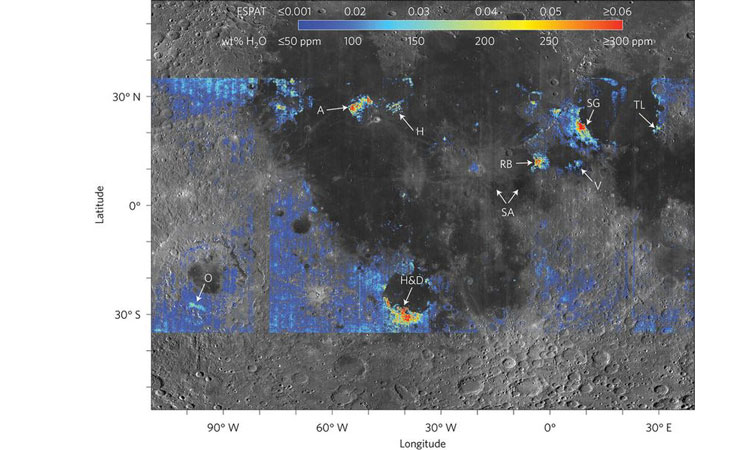The Moon Is Holding A Little More Water Weight Than We Thought
It turns out that the Moon is pretty good at hiding all it’s water weight. There is a lot more water than scientists originally thought. And it’s deep below the lunar surface.
A new study suggests that water is widespread beyond the poles, where it was already known to exist. Although scientists don’t know exactly how much water is there.
The discovery has consequences for future missions to the Moon.
Scientists analyzed lunar rock samples that contain tiny, water-trapping beads of glass.
These beads formed when magma erupted from the Moon’s interior billions of years ago. Water was trapped inside them.
The scientists then looked at satellite data collected by an Indian lunar orbiter to check where these water-trapping glass beads are.
The results, published today in Nature Geoscience, show that there are widespread ‘hot spots’ of water-rich volcanic material beyond the Moon’s poles.
The Moon is not dry
For years, scientists thought the Moon was completely dry.
WRONG!
Then in 2008, scientists found water trapped in those glass beads of volcanic rocks collected during the Apollo missions in the 1970s.
Since then even more evidence has been discovered.
However, there are still questions about just how wet the Moon’s interior is.
Today’s study tries to answer this question. Using satellite data collected by the Moon Mineralogy Mapper instrument on the Chandrayaan-1 orbiter.
“The fact that they see this feature associated with the glasses tells us that there was indeed quite a bit of water in the interior of the Moon when these volcanic eruptions were occurring,” Anthony Colaprete of NASA said.
The study doesn’t say just how much water there is, but it maps where these water-rich hot spots are.
Some of them is near the Apollo 15 and Apollo 17 landing sites.
This information is useful because if people return to the Moon, they could mine the surface for water instead of carrying it all the way from Earth.
Now we know where more of this precious resource is.



Comments are closed, but trackbacks and pingbacks are open.